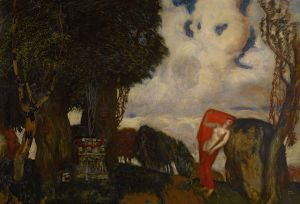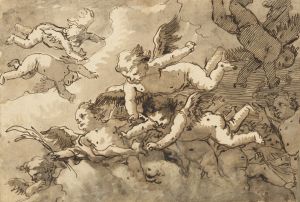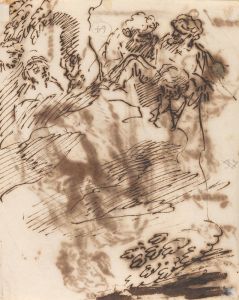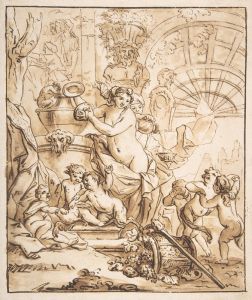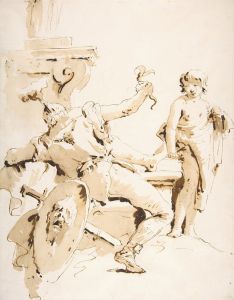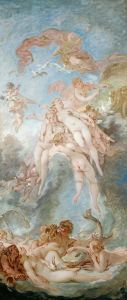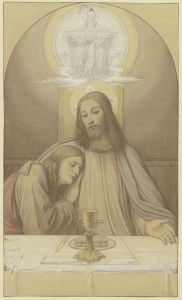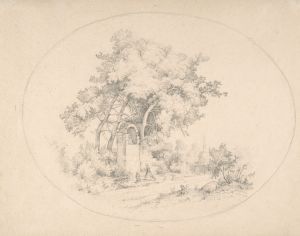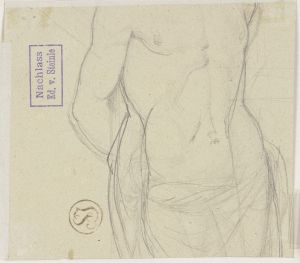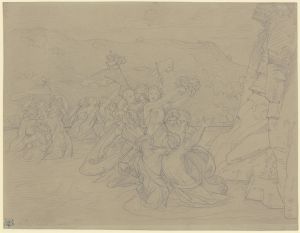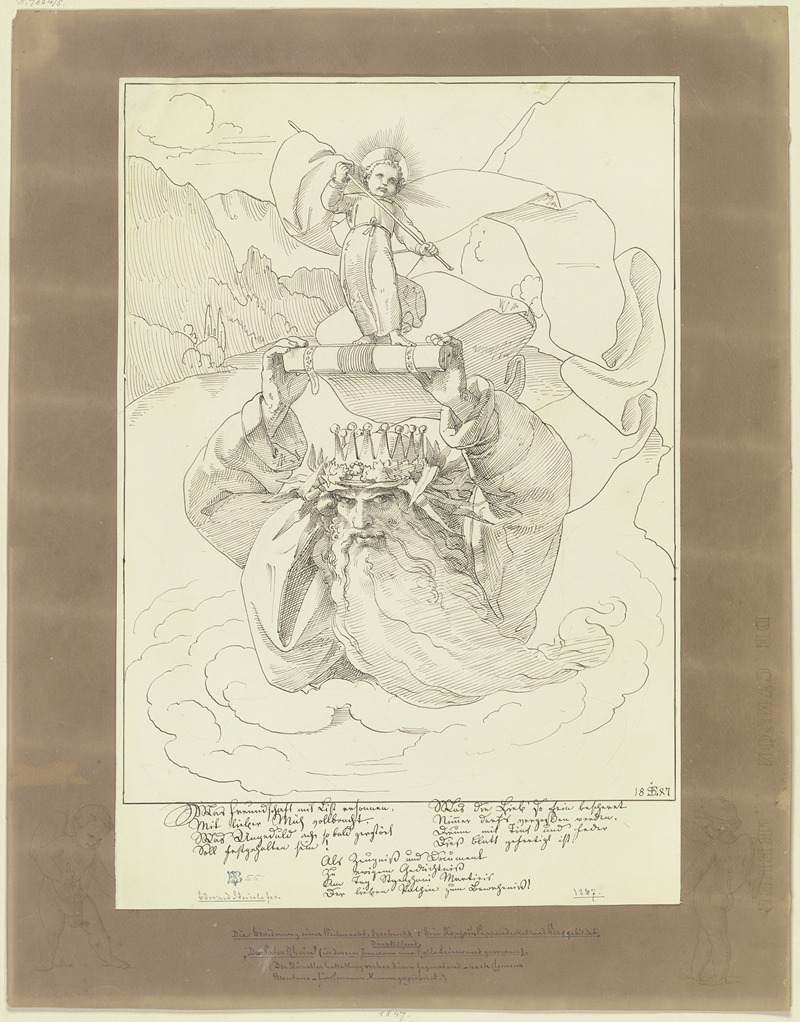
Brauner Montierungsbogen mit zwei das Hauptblatt rahmenden Putten an den unteren Ecken
A hand-painted replica of Eduard von Steinle’s masterpiece Brauner Montierungsbogen mit zwei das Hauptblatt rahmenden Putten an den unteren Ecken, meticulously crafted by professional artists to capture the true essence of the original. Each piece is created with museum-quality canvas and rare mineral pigments, carefully painted by experienced artists with delicate brushstrokes and rich, layered colors to perfectly recreate the texture of the original artwork. Unlike machine-printed reproductions, this hand-painted version brings the painting to life, infused with the artist’s emotions and skill in every stroke. Whether for personal collection or home decoration, it instantly elevates the artistic atmosphere of any space.
Eduard von Steinle was a prominent 19th-century Austrian painter, known for his contributions to the Nazarene movement, which sought to revive honesty and spirituality in Christian art. His works often depicted religious themes and were characterized by their detailed and symbolic nature. One of his notable works is "Brauner Montierungsbogen mit zwei das Hauptblatt rahmenden Putten an den unteren Ecken," which translates to "Brown Mounting Sheet with Two Putti Framing the Main Sheet at the Lower Corners."
This artwork exemplifies Steinle's meticulous attention to detail and his ability to infuse his compositions with symbolic meaning. The piece features a central main sheet, which is framed at the lower corners by two putti. Putti, often depicted as chubby male children, are a common motif in Renaissance and Baroque art, symbolizing innocence, love, and the divine. In Steinle's work, the putti serve as ornamental figures that enhance the overall composition, adding a layer of visual interest and thematic depth.
The use of a brown mounting sheet suggests a focus on the interplay between the figures and the background, highlighting Steinle's skill in creating a harmonious balance within his compositions. The choice of color and the arrangement of elements reflect the artist's adherence to the principles of the Nazarene movement, which emphasized a return to the simplicity and purity of early Christian and medieval art.
Steinle's work was heavily influenced by his religious beliefs and his desire to convey spiritual messages through his art. His involvement with the Nazarene movement, which was founded in the early 19th century by a group of German and Austrian artists, played a significant role in shaping his artistic style. The Nazarenes sought to counteract the perceived excesses of the Baroque and Rococo periods by returning to the clarity and sincerity of earlier artistic traditions.
Throughout his career, Steinle was associated with several significant artistic projects, including the decoration of churches and public buildings. His works often featured biblical scenes, saints, and allegorical figures, rendered with a keen eye for detail and a deep sense of devotion. Steinle's ability to blend traditional iconography with his unique artistic vision earned him a respected place among his contemporaries.
While "Brauner Montierungsbogen mit zwei das Hauptblatt rahmenden Putten an den unteren Ecken" may not be as widely recognized as some of Steinle's larger religious commissions, it remains an important example of his artistic approach and thematic concerns. The piece reflects his commitment to creating art that is both visually engaging and spiritually meaningful, a hallmark of his work throughout his career.
Eduard von Steinle's legacy as a painter is marked by his dedication to the ideals of the Nazarene movement and his ability to convey profound spiritual messages through his art. His works continue to be appreciated for their technical skill, emotional depth, and the timeless themes they explore.





